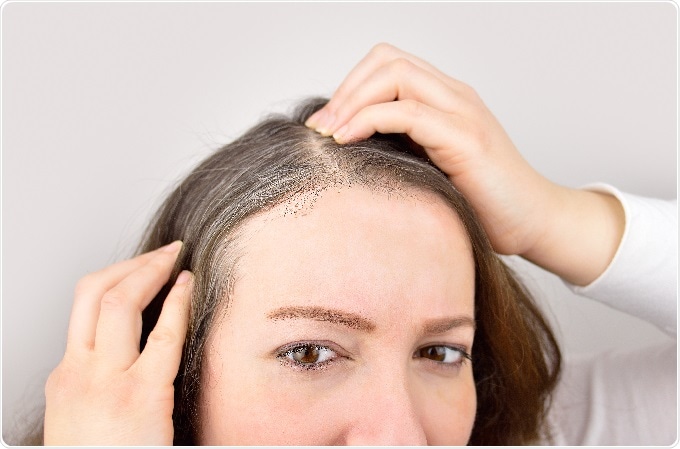May 9 2017
Researchers at the UT Southwestern Medical Center have discovered the cells that are directly responsible for hair growth and the mechanism that causes gray hair. The study results could help in identifying feasible treatments for balding and hair graying.
 Credit: cunaplus / Shutterstock.com
Credit: cunaplus / Shutterstock.com
“Although this project was started in an effort to understand how certain kinds of tumors form, we ended up learning why hair turns gray and discovering the identity of the cell that directly gives rise to hair,” said Dr. Lu Le, Associate Professor of Dermatology with the Harold C. Simmons Comprehensive Cancer Center at UT Southwestern and member of the Hamon Center for Regenerative Science and Medicine. “With this knowledge, we hope in the future to create a topical compound or to safely deliver the necessary gene to hair follicles to correct these cosmetic problems.”
The study published online in the journal Genes & Development shows that the protein KROX20, is turned on in skin cells that devlop into the hair shaft. The pigmentation of the hair is then regulated by the stem cell factor (SCF) expression in hair shaft progenitor cells.
According to the study in a mouse model, the fur turned white when the SCF gene in the hair progenitor cells was deleted. Hair growth was arrested and the mice became bald when the KROX20-producing cells were deleted.
Dr. Le, who holds the Thomas L. Shields, M.D. Professorship in Dermatology, said that while studying a disorder called Neurofibromatosis Type 1, a rare genetic disease that causes tumors to grow on nerves, their team had accidentally discovered this explanation for balding and hair graying.
He further explained that researchers are aware that the stem cells contained in a bulge area of hair follicles are involved in making hair and that SCF is important for pigmented cells. However, the details about the actions when the stem cells move down to the base, or bulb, of hair follicles, are still unknown, along with which cells in the follicles of the hair produce SCF or that cells involved in the creation of the hair shaft generates the KROX20 protein.
Within the cells, if there is a role of KROX20 and SCF, they move up from the bulb and interact with melanocyte cells that produce pigments, the cells grow into pigmented hairs.
The study has found that in mouse models, the hair turns gray without SCF, as age progresses the hair turns to white, and hair growth is arrested without KROX20-producing cells.
Dr. Le concluded that the researchers would now try to find whether the KROX20 in cells and the SCF gene stop working properly due to aging in people, which leads to gray hair and thinning of hair in elderly people and balding in males. This could provide answers about the reasons for hair graying and hair loss, the first signs of aging in general.